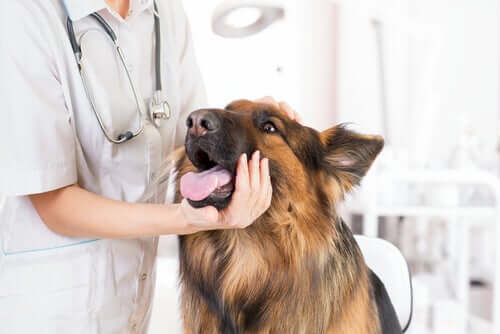Skin Allergies in Dogs - Symptoms and Treatment

Maybe you’re starting to suspect skin allergies in one of your dogs. It might be true if they’re showing any of the following symptoms:
- Excessive scratching
- Grooming
- Rashes
- Sneezing
- Watery eyes
- Paw chewing
- Skin inflammation
It’s not uncommon for a dog to have skin allergies as these are often triggered by either environmental factors or diet. They’re a response from an animal’s immune system when confronted with some kind of foreign agent (no, we’re not talking about 007 here).
Allergies are much more frequent than you may imagine. Continuous scratching is one of the most common symptoms, most likely due to the presence of allergens.
Allergens lurk around most environments. But, just as with humans, they only affect those dogs who are extra sensitive to their presence. Allergies are the immune system’s defense mechanism against them.
Skin allergies in dogs present themselves as inflammation and it causes discomfort and redness in certain areas of their body. Sometimes, they even lead to hair loss.
Dogs acquire allergens through inhalation, ingestion or contact with other animals. Some of the most common are fleas, pollen, herbs, food, mites, insect bites, etc.
Symptoms and courses of action

As we mentioned above, the main symptom that your dog might is obsessive itching and scratching. If they lick or bite themselves continuously, then it’s time to take a look at them.
The most common signs are:
- Redness of the skin, especially between their toes, the pads of their legs and behind their ears.
- Dry, flaky skin or a rash.
- Frequent sneezing and excessive shaking could also be a sign of allergies.
Many of these signs are, in fact, just the way an animal behaves when confronted with discomfort. It isn’t difficult, therefore, to be aware of it.
The first thing you must do is to take your dog to the vet. They’ll prescribe treatment after diagnosing the problem. Be it in the form of injections, topical shampoos, a well-balanced diet, or oral medications.
In order to determine the proper path to follow, your veterinarian may take a sample and do a biopsy or a blood test. This is mainly to determine the exact type of allergy, its severity, and the appropriate medication and dosage.
Possible treatments

All treatments aim to eliminate a specific allergen. And antihistamines, which are mostly injectable, have a more prolonged effect. You should use them with caution and only as the vet prescribed them.
When food is responsible for a skin allergy, then the dog must go on a special diet that’s free of potential allergens. It’s important to follow the instructions exactly as the vet stated them.
If the problem is due to external allergens such as pollen or dust, then you must ensure that your pet’s environment is free of them.
In all cases, you must maintain proper hygiene. Both in the dog’s environment and in their body. To do so you can resort to baths with products designed for this purpose. You must take measures to keep the bloodsuckers away from them. Fleas and ticks are often the reason for allergy outbreaks.
If the dog has fleas, then you must keep track of when these make an appearance, especially during hot weather. It helps a lot to vacuum your house, particularly the places where they lounge and sleep. This is the best way to eliminate not only the bloodsuckers but their eggs. It’s also the best way to prevent future invasions.
Likewise, it’s important to consult your vet before using any type of allergy products such as shampoos or soaps.
Preventing skin allergies in dogs is the best treatment
Allergies are really annoying for your animal, the degree depends on the allergen they’re sensitive to. In the case of allergies to mites or pollen, the problem will arise with the seasons and the animal will require medication for long periods of time.
Beyond the specifics of every case, you should be responsible and follow up with their treatment when confronted with skin allergies. You must pay special attention to any side effects.
It’s always essential to prevent these kinds of problems. So, always keep your pet in a clean environment and free of possible bacteria. As you can see, this is how we deal with skin allergies in dogs.
